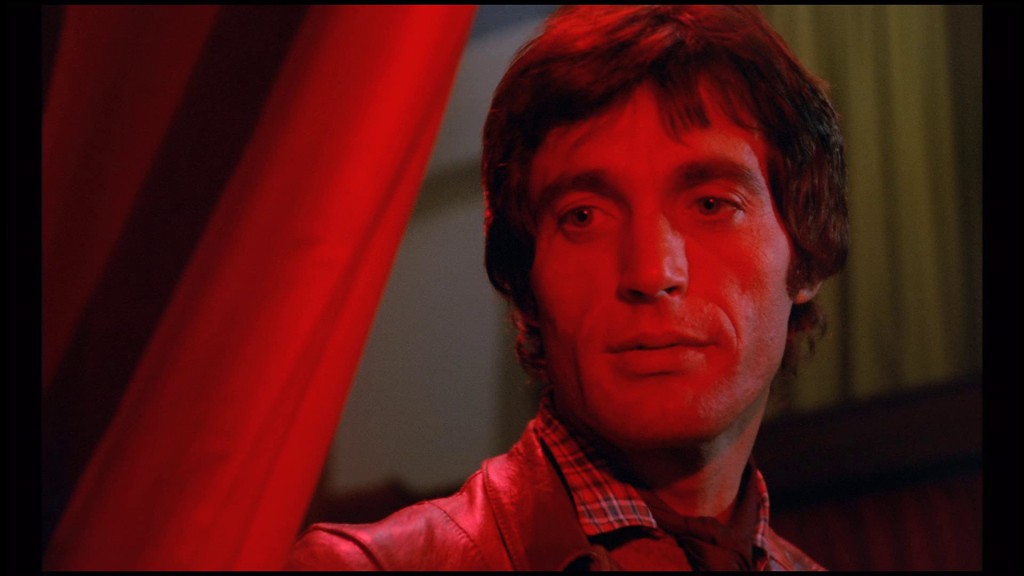
Written by Artur Brauner, Biagio Proietti, Giorgio Scerbaneco, Duccio Tessari
Directed by Duccio Tessari
Italy, 1970
As a feature relatively hidden from mainstream film culture, Death Occurred Last Night’s only critical talk belongs to the hardcore giallo enthusiasts. Debate over whether the film fits into the strict classifications of giallo or perhaps the less-enthused poliziotteschi take prominence in these discussions, with something of a consensus drawn as “probably neither.” These insights from impassioned people looking through the lens of subgenre offer an interesting dissection that would escape those new to the club. That is, by evaluating the film purely in the context of it entering the genre canon, one must take its failures in the context of being campy, and therefore enjoyable in its own right. However, if outside the giallo realm, these camp elements are harder to defend and leave the film in a much messier position, despite having positive qualities outside giallo criteria. Raro Video’s release of Death Occurred Last Night occupies a middle territory — too self-serious and straightforward to be a giallo while tenuously grasping at its shoddy giallo-like roots in its individual shots.
Amanzio (Raf Vallone) approaches detective Duca Lamberti (Frank Wolff) about the recent disappearance of his daughter, Donatella (Gillian Bray). She’s 25 but exhibits the curious feature of having the mind of a 3-year old while also being a nymphomaniac. Because of her childish outlook, needs for basic activities (a lightly humorous scene of Amanzio changing her bra), and willingness to run off with any man, her father has lapsed into paranoia for her safety and is faint at the thought of losing her. The detective and trusty young muscle Mascaranti immediately suspect the prostitution rings and call houses as her peculiar condition makes for a valuable target. Their suspicions are confirmed through tracking and tracing the rings’ gossip, but, as gauged from the title, they’re too late. Breaking the news to Amanzio transforms him into a maddened vigilante, frantically questioning everyone in his apartment about his daughter. Meanwhile, the policemen belittle and beat their way to the captors’ information, only to find Amanzio surrounded by the pulpy results of his revenge.
Tessari departs this film from his previous giallo works by invoking genuine plot concerns. The narrative is not driven by the skin of Italian beauties or the formalistic craftsmanship of genre-defining violence, but through the quirks and tension of his characters. Detective Lamberti discusses the case and waxes poetically about the role of police work to his wife. He plays the guitar to soothe himself and ingests his nasal medication for sinusitis as if he were an addled pill-popper. Mascaranti enjoys the call houses a little too much and offers his resignation to get a suspect to talk — distracted, yet invested and crafty. Quirky, flawed cops don’t tread new territory for cinema at large, but the attention paid to the people who rule the screentime make for a more interesting giallo-like film. More than this, the performance of the broken Amanzio dominates the emotional sphere of the film. Having lost what has been a toddler for him for so long, Frank Wolff’s portrayal of the weary father morphs after hearing the dreadful result of the investigation. The sappy, forced sadness suddenly evolves into a confused rage as if sleepwalking as Amanzio pushes his daughter’s newfound, bloodstained teddy bear into the faces of those who walk into the apartment. His insistence confounds himself, admitting that he only found the perps due to his free time on a Saturday. By the end of the film, he cannot admit satisfaction — only confusion. For a plotline similar to the recent Prisoners, Amanzio displays a more interesting and frankly more human reaction than Hugh Jackman’s unbridled rage.
Despite the success of a clever cast to front an interesting thriller, the film cannot see past derivative formalistic qualities descended from Hitchcock and the giallo copycats. Tessari even shares the same fascination with the tension brought through staircase imagery as Hitchcock — one shot traces the fall of oranges from several floors, and others observe the characters with the path and structure of the staircase in full display. The act of homage or borrowing from thriller history would normally not be such a concern, but Tessari’s shots are determined to emulate bargain-basement versions of the haunting Vertigo scenes. It’s a micro-scale objection to what might be the overarching presumption of giallo as a whole: take a synthesis of Hitchcock and pulp fiction and overload it with blood and breasts. It’s what drives giallo to be defended with snippets from Susan Sontag’s “Notes on ‘Camp’” and what may ultimately confuse the genre’s enthusiasts over the classification of Death Occurred Last Night.
The conversation of what constitutes a genre and whether or not certain films qualify in that genre tends to flood forums of nerdspeak and nit-pickers. Successfully placing a film in a genre box might seem unproductive: a discussion about artificial criteria instead of the films themselves. Yet these genres empower us to discuss films through different lenses and histories as well as provide new context for evaluation. Inevitably, this does lead to productive arguments about the individual films — viewers can point to specific moments and themes and argue about how they’re behaving within the work at large. For Death, however, the work at large is indebted to a mixed bag of camp and genuine drama, leaving it without a strong backing from either type of defender. It’s unique, sure, but this classification problem is a symptom of the inherent messy structure that the film embraces. It behaves like Amanzio, the vigilante, as it acts out with vigor and conviction until it ultimately slumps into the mess it made, confused and unhappy.
–Zach Lewis



